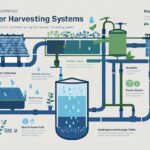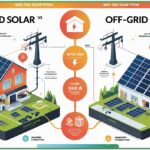Understanding LEED Certification: What It Is and Why It Matters for a Sustainable Future
Have you ever walked into a building and felt a sense of calm, knowing it was designed with both people and the planet in mind? Chances are, that building might have achieved **LEED certification**. In today’s rapidly evolving world, where environmental consciousness and sustainable practices are no longer options but necessities, understanding what LEED is and why it holds such significance is crucial. Whether you’re an architect, a developer, a homeowner, or simply someone interested in green building, unlocking the mysteries of LEED can shed light on how we’re shaping a more responsible and efficient built environment. This comprehensive guide will demystify LEED, revealing its core principles, its tangible benefits, and why it’s a benchmark for sustainable development worldwide.
What Exactly is LEED Certification?
At its heart, **LEED certification** stands for Leadership in Energy and Environmental Design. It’s a globally recognized symbol of sustainability achievement, developed by the U.S. Green Building Council (USGBC). More than just a plaque on a wall, LEED provides a framework for healthy, highly efficient, and cost-saving green buildings. It’s a rigorous, third-party certification program that verifies a building or community was designed and built using strategies aimed at improving performance across all the metrics that matter most: energy savings, water efficiency, CO2 emissions reduction, improved indoor environmental quality, and stewardship of resources and sensitivity to their impacts.
The Guiding Principles Behind LEED
LEED operates on a credit-based system, where projects earn points for adhering to various sustainable building strategies. These strategies are organized into several key categories:
- Sustainable Sites (SS): Encourages strategies that minimize impact on ecosystems and water resources. This includes reducing heat island effect, managing stormwater runoff, and providing access to public transportation.
- Water Efficiency (WE): Promotes smarter use of water both inside and outside the building. Strategies include efficient landscaping, innovative wastewater technologies, and low-flow fixtures.
- Energy and Atmosphere (EA): Focuses on energy performance. This involves optimizing energy performance, using renewable energy, and commissioning and verification to ensure systems operate as intended.
- Materials and Resources (MR): Encourages the use of sustainable building materials and reduction of waste. This includes using recycled content, regionally sourced materials, and managing construction waste effectively.
- Indoor Environmental Quality (EQ): Addresses the health and comfort of building occupants. Strategies cover aspects like indoor air quality, thermal comfort, lighting, and acoustic performance.
- Innovation in Design (ID): Recognizes projects for innovative strategies not covered elsewhere or for exemplary performance beyond required minimums.
- Regional Priority (RP): Addresses specific environmental priorities relevant to a project’s geographic location.
Each category has a set of prerequisites (mandatory requirements) and credits (optional pathways to earn points). The total number of points achieved determines the level of **LEED certification**.
LEED Certification Levels
There are four levels of **LEED certification**, reflecting increasing levels of sustainability performance:
- Certified: 40–49 points
- Silver: 50–59 points
- Gold: 60–79 points
- Platinum: 80+ points
Achieving a higher level signifies a greater commitment to green building practices and often correlates with more significant environmental and economic benefits.
—
Why Does LEED Certification Matter? Tangible Benefits for All
Beyond the environmental accolades, **LEED certification** offers a compelling array of benefits for building owners, occupants, and the broader community. These advantages span economic, environmental, and health dimensions, making LEED a powerful driver for positive change in the built environment.
Economic Benefits: Saving Money and Increasing Value
- Lower Operating Costs: LEED-certified buildings are designed for optimal energy and water efficiency, leading to significantly reduced utility bills. This can translate to tens of thousands, or even hundreds of thousands, of dollars in savings over the lifetime of a building.
- Higher Property Value: Green buildings often command higher rents and sales prices. They are increasingly seen as premium properties, attracting tenants and buyers who value sustainability and lower operational expenses.
- Increased Occupancy Rates: For commercial properties, LEED certification can be a powerful differentiator, attracting environmentally conscious tenants and businesses.
- Tax Incentives and Rebates: Many local and national governments offer tax credits, grants, and other incentives for green building projects, further offsetting initial investment costs.
- Reduced Waste Disposal Costs: Strategies focused on waste reduction during construction and operation lead to less landfill waste and associated disposal fees.
Environmental Benefits: A Greener Footprint
- Reduced Energy Consumption: By incorporating efficient HVAC systems, better insulation, and renewable energy sources, LEED buildings use substantially less energy, lowering greenhouse gas emissions.
- Water Conservation: Smart landscaping, efficient fixtures, and rainwater harvesting reduce potable water usage, easing the strain on local water resources.
- Less Waste in Landfills: LEED promotes waste diversion through recycling and reuse of construction materials, minimizing the environmental impact of building and demolition.
- Protection of Ecosystems: Sustainable site development and responsible material sourcing help preserve natural habitats and reduce environmental degradation.
- Improved Air Quality: By minimizing pollution from construction and operation, and specifying low-VOC (volatile organic compound) materials, LEED buildings contribute to cleaner outdoor air.
Health and Well-being Benefits: A Better Place to Live and Work
- Enhanced Indoor Environmental Quality: LEED emphasizes good ventilation, natural daylighting, and the use of non-toxic materials, leading to healthier indoor air quality and more comfortable spaces.
- Increased Occupant Comfort and Productivity: Studies have shown that occupants of green buildings report higher satisfaction, improved cognitive function, and fewer health issues. This can translate to reduced absenteeism and increased productivity in workplaces.
- Access to Natural Light and Views: Maximizing daylight and providing connections to the outdoors can improve mood, reduce eye strain, and enhance overall well-being.
- Community Benefits: LEED encourages thoughtful site selection and development that promotes walkability, access to green spaces, and reduced reliance on personal vehicles, fostering healthier communities.
The cumulative impact of these benefits underscores why **LEED certification** is far more than just a label; it’s a holistic approach to creating buildings that are better for people, the planet, and profit.
—
The LEED Certification Process: A Brief Overview
Achieving **LEED certification** involves a structured process that guides project teams through sustainable design, construction, and operation. While specific steps can vary by project type, the general pathway includes:
1. Project Registration
- The first step involves registering the project with GBCI (Green Business Certification Inc.), the certifying body for LEED. This provides access to resources and tools.
2. Design and Documentation
- Project teams integrate LEED strategies into their design and construction plans, documenting how each credit requirement is met. This often involves collaboration among architects, engineers, contractors, and consultants.
3. Construction and Implementation
- The sustainable design is brought to life during construction, with adherence to green building practices, material sourcing, and waste management plans.
4. Application and Review
- Once construction is complete, the project team submits documentation for review. GBCI reviewers assess the submitted information against LEED requirements. This typically involves a preliminary review and a final review.
5. Certification Awarded
- Upon successful completion of the review process and achievement of the minimum points, the project is awarded **LEED certification** at the corresponding level (Certified, Silver, Gold, or Platinum).
This systematic approach ensures that projects meet the rigorous standards set by the USGBC.
—
LEED’s Evolving Role in a Sustainable Future
As climate change accelerates and resource scarcity becomes a pressing issue, the importance of **LEED certification** continues to grow. It serves as a critical tool for guiding the transformation of the built environment towards greater sustainability and resilience. With continuous updates and adaptations to evolving building science and environmental challenges, LEED remains at the forefront of the green building movement.
It’s not just about constructing new buildings; LEED also offers pathways for existing buildings to improve their performance, ensuring that sustainability is an ongoing commitment. From reducing operational costs and enhancing occupant well-being to mitigating environmental impact, the benefits of LEED are undeniable. Embracing LEED principles is an investment in a healthier, more prosperous future for communities and the planet. Are you ready to explore how LEED can make a difference in your next project or daily life?



